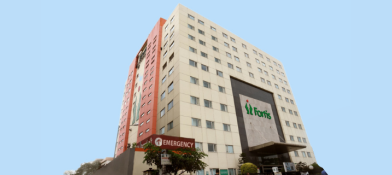Skin biopsy
Skin biopsy is a common procedure done in dermatology. It involves removing a part or total of the suspicious lesion to visualize that under a microscope. This is used to diagnose various skin disorders. Skin disorders can be a rash, growth, infection, scale, plaque, or a bubble.
Types of biopsies:
There are various types of skin biopsy procedures. Based on the amount of tissue removed they are of two types. They are mainly incisional biopsies where a sample of the skin is removed and excisional biopsies where the suspicious lesion is removed in total. An incisional biopsy can be shaved, cut with scissors, curettage, or taken as a punch specimen. Excisional biopsy is done as a full-thickness scalpel excision or with a deeper oblique (shave or scoop) excision.
- Shave biopsy: It is the simplest form of incisional skin biopsy where a special instrument called a scalpel or a blade is used to remove skin tissue in the form of a scoop. This is advisable for superficial skin lesions like non-melanoma skin cancers.
- Scissors: This is done when small tags of lesions are present with a base. The base or the peduncle is snipped off with special scissors by grasping it with forceps. This is indicated for skin tags.
- Punch biopsy: This is another type of incisional biopsy where the suspicious tissue is obtained by using a special instrument that has a cylindrical blade. This removes the tissue at greater depth and with full thickness. Hence this is indicated for inflammatory skin lesions.
- Wedge biopsy: This is another type of incisional biopsy where the suspicious tissue and normal tissue are both taken in the form of a wedge. Tissue is taken in a cross-section from the center. This is used to diagnose skin conditions called keratoacanthomas.
Indications:
Skin biopsy is indicated to diagnose various skin conditions like cancers, skin tags, blistering disorders, irregular moles, and actinic keratitis.
Contraindications:
There are no contraindications for skin biopsy as it is important to evaluate a lesion under the microscope for a prompt diagnosis. In case of allergy to anesthesia, bleeding disorders, or infections necessary care has to be taken by the healthcare provider before performing a skin biopsy.
Advantages:
Skin biopsy has many advantages. It helps
- In identifying and diagnosing a condition
- In giving appropriate treatment to the condition
- In the staging of the cancers
- Sometimes removing the entire lesion
- In assessing the prognosis
Before the biopsy:
Before the skin biopsy, an individual has to discuss the necessity and the importance of the procedure with the healthcare provider. Complete medical, surgical, allergic, and medication histories are collected from the patient. Allergic history to tapes, creams, lotions, and previous skin infections are also to be informed to the healthcare provider. Diet will be restricted and a list of medications to be stopped and to be used before the procedure will be given. Inform the healthcare provider of any previous allergies to anesthesia. In case of pregnancy inform the healthcare provider. Jewelry should be removed.
During the biopsy:
During the procedure, the biopsy site is cleaned with alcohol or an antiseptic to reduce infection and decrease oil secretion from the skin. Anesthesia is injected and it is marked to know where it is given.
For shave biopsies, after cleaning the surgical site, the skin is stretched and shaved using a razor-like tool to obtain a superficial lesion or squeezed to obtain a deeper lesion.
For scissor biopsies, painting the lesion with aluminum chloride helps to decrease the bleeding in pedunculated lesions that have a stalk. They are held at the top and snipped at the base.
For punch biopsies, disposable or reusable punches can be used. A punch is a special instrument with cylindrical blades to cut the skin. One can take from a single site or multiple sites. Varied diameters of the punches are available ranging from 2-6mm. The skin is stretched perpendicular to the tension lines of the skin and the punch is rotated back and forth while entering inside the skin and its deeper layers.
For excisional biopsies, a special biopsy blade called the scalpel is used to obtain the full thickness of the lesion and its deeper tissues.
After obtaining the tissue it is placed in a fluid that preserves the tissue till it is transported to the lab for observing it under the microscope. Bleeding is controlled using styptics or other hemostatic agents. Sutures are placed.
After the biopsy:
After the procedure, the biopsied area is covered with a bandage. Mild discomfort and pain may be present. Instructions for applying pressure over the bandaged area to control bleeding are given. The collected sample is then sent for lab analysis. Pressure should be applied for 20 minutes over the site to control bleeding. Scars are common after biopsies and they fade away in 1-2 years. Avoid bathing in hot bathtubs and swimming pools till 7 days after the procedure. Healing of the biopsied site depends on the site from which it is taken. Clean the site twice daily to avoid any infections.
Interpretation
Pathologists and cytologists are specialists who interpret the results. The report consists of a detailed description of the biopsy sample like the color and consistency of the samples and gross details. The cells that are observed under the microscope are also described in the report. The details contain the types of cells, conditions, and dyes used. Finally, the report ends with the diagnosis given by a pathologist as observed from the microscope.
Risk and complication:
The risks and complications associated with this procedure are fewer and is a safe procedure. However, certain complications like bruising, intense pain and uncontrolled bleeding from the biopsy site, scarring, and an allergic reaction can develop.
Conclusion:
Skin biopsy is a common procedure for skin conditions. It is done to diagnose various skin disorders. Based on the results, the cause of the condition can be determined which helps in the treatment and assessing the prognosis.





























